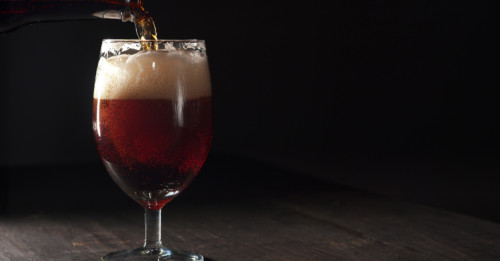This is not a wine, to be clear, but a really strong beer, brewed first in England then America. Inevitably, the American version evolved to include a (whole lot) more hops. But the key factor in this style is strength. And yes, some barley.
English Barleywine Essential Info
- Color: Light copper to dark brown
- ABV: 8%-12%
- Commercial Examples: Thomas Hardy’s Ale, Flying Dog Horn Dog Barley Wine Style Ale, AleSmith Old Numbskull
Imagine a wine-strength beer made from barley and you’ll understand the name barleywine. Barleywine actually has some relation to a category called Strong Ales, but the basic concept is the same—beers of high impact, both in flavor and alcohol. Though that flavor itself can vary depending on a few factors: English Barleywines tend to go heavy on malty complexity, with some fruitiness (especially dried and dark fruit) and bready flavors enriched by caramel, toffee, toast, molasses, etc. Sweetness may or may not linger, balanced out by that high alcohol content. Aged English barleywines will also finish drier than others, with even more flavors borrowed from the wooden casks. Generally all English barleywines should be moderately hoppy, with English hops making a subtler impression than the hops in American barleywines. A big, friendly beer fit for some cold weather storytelling, preferably in a pub or fireside.
American Barleywine Essential Info
- Color: Amber to rich copper
- ABV: 8%-12% (varies)
- Commercial Examples: Sierra Nevada Bigfoot Barleywine, Great Divide Old Ruffian Barleywine, Central Waters Brewing Co. Brewer’s Reserve Bourbon Barrel Barleywine
Big, bold beers similar in malty intensity to their English cousins, except American barleywines tend to dial the hops way up. The nose of an American barleywine may have more citrus and pine/resin notes (classic Western American hop characteristics), and the taste itself may have even more hop flavor and a sturdy backbone of bitterness. Not that malt doesn’t play a substantial role, with complex layers and bready, caramelly notes, even some possible sweetness. It’s just all balanced against (usually in favor of) American hops. A good, rich beer that isn’t as hop-extreme as, say, a Double IPA. Because of their strength and complexity, many barleywines are actually good candidates for aging.
